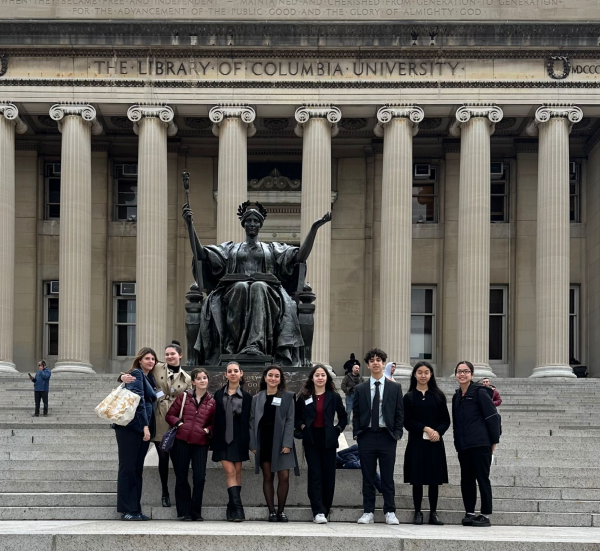Gender Disparity in the UNIS Math Department
When you walk through the fifth-floor hallway, you must have noticed the six math teachers explain complex concepts or solve problems with their students. But, there is only ONE female teacher. Although UNIS often prides itself for being diverse, there is gender disparity present in the high school math department.
Despite the fact that more than 75% of high school teachers in the U.S. are female, why do only 44% of women make up the high school math faculty?
Ever since the first discoveries by renowned mathematicians such as Pythagoras, Euclid, and Euler, mathematics has been viewed as a male dominant field. Labeled as the “brilliance effect” by Professor Topaz and computer scientist Shilad Sen, certain people believe that an individual is born with natural talent for a subject, which leads to their success, rather than persistence and practice.
Unfortunately, women are less likely to be perceived as “brilliant” in math and sciences, despite the fact that female mathematicians have proven to be just as capable of performing mathematical studies as men. So, why students don’t learn about female mathematicians who have made lasting impacts on the field of mathematics?
Hypatia (c.355-415) is documented as the first female mathematician in history, studying mathematical commentaries and continuing to lecture on math and astronomy. While Florence Nightingale is remembered today as a nurse during the 1800s, her analysis of statistics saved thousands of lives by discovering that poor sanitation was the main cause of high mortality rates; she also created a new form of a graph, known as the coxcomb, that was easy for others to interpret data. Perhaps, people today have only heard of Dorothy Johnson Vaughn mainly because of the movie “Hidden Figures,” who advanced the development of coding languages while working for NASA. As female mathematicians do not receive recognition for their remarkable achievements, it is truly unfortunate that math students are not more aware of their contributions.
According to studies conducted by the University of North Carolina, female math teachers can have a large positive influence on girls. For example, female students were 19% more likely to graduate college with a major in math or science in schools where 72% of the math and science faculty were women, compared with those where only 54% of the staff were female. Further, when the proportion of female high school math teachers went up from zero to half, girls are 3.3% more likely to continue taking math courses in college.
While every member of the math faculty at UNIS does help students enormously, the ratio of female to male teachers, 1:6, is clearly unbalanced. We will have a more gender-diverse teaching environment if there are more female math teachers. “If you have female teachers teaching the highest level of math on offer,” Lindsey Edgar, a Tut House math teacher, said, “then young female students see that another female has been successful with math at a high level and this helps them feel more confident that they could be successful too.” Of course, this does not mean that all students have to be taught by female teachers but that the presence of female teachers can give students more confidence when deciding about what to study in the future.













